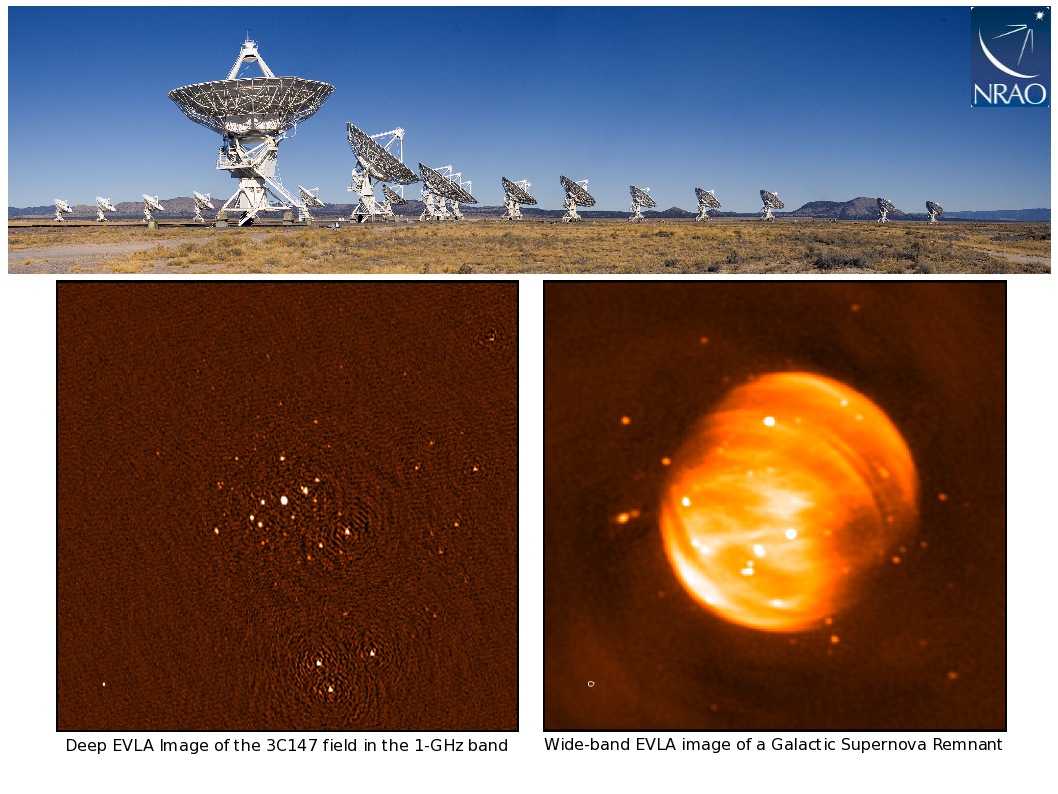Daily Image
29-06-2010Today's colloquium: Interferometric Imaging and Direction Dependent Effects (S. Bhatnagar, NRAO)
| Submitter: | Valeriu Tudose |
| Description: | In this colloquium, I will briefly discuss challenges in high dynamic range imaging with synthesis radio telescopes. I will then discuss in more detail the problem of direction dependent effects and recent progress towards developing new algorithms to correct for such effects. Many scientific deliverables of the next generation radio telescopes need high dynamic range imaging which in turn require removal of systematic errors to high accuracy for long integration intervals and across wide bandwidths. In general, many sources of error are directionally dependent and unless corrected for, will be a limiting factor for the imaging dynamic range with these next generation telescopes. One of the strongest sources of such errors is due to the antenna forward gain pattern (the Primary Beam) which varies significantly with time, frequency and polarization. New calibration and imaging algorithms to correct for the effects of antenna primary beams as a function of time, frequency and polarization are therefore critical to achieve the scientific potential of the next generation instruments. With relatively high data volumes, the algorithms also need to be efficient. Progress towards solving the problem of direction dependent effects, in particular due to time and frequency variable primary beams will be discussed. Initial results from the application of these techniques to wide-band observations from the EVLA will be presented. Parametrization and solving for direction dependent effects, combining these algorithms with new algorithms to account for the frequency dependence of the sky emission and run-time efficiency of the combined algorithm will also be discussed. The images above, both in the 1-GHz band of the EVLA, show the two extremes of the imaging challenges. The image on the left has mostly compact source distributed throughout the field of view, with a strong compact source (3C147) at the center of the field. Image on the right is of a Galactic Supernova Remnant (SNR) where the extended emission fills the antenna primary beam with superimposed compact emission. Sources in the first side lobe of the primary beam are clearly visible in both images. |
| Copyright: | Associated Universities, Inc. Washington DC, USA/S. Bhatnagar |
| Tweet |  |
